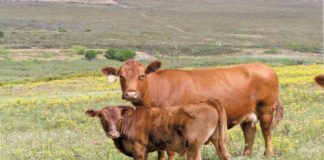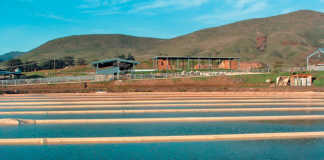
Photo: Roelof Bezuidenhout
Packing a line of stones along the bottom of a camp fence is probably the most cost-effective non-lethal way of controlling the movement of black-backed jackal (Canis mesomelas).
These predators keep you busy and can wipe out half of your lamb crop before you know it.
Packing stones to keep predators out of lambing areas works well, according to small-stock farmers who have done it.
It won’t keep caracal out, however, as these cats can climb right over.
And the fence must still be patrolled and checked regularly, as with electrified fences, for holes made by burrowing animals such as aardvark (Orycteropus afer), through which an enterprising jackal can find its way to the prey.
The two methods (stone wall, or a fence)can be used in combination, of course.
Also, the sieve fencing must still be in good condition. Unfortunately, replacing it with new sieve costs more than R20 000/km, without the labour, making electrification an option.
One drawback of electrification is that the area below the wire must be kept clear of vegetation to prevent shorts. This must be done by hand or with herbicides.
LABOUR-INTENSIVE
Carting and packing the stones is labour-intensive and tough on vehicles, but often the stones are on site. The job can be done over a period and tackled when there is time. But it will be worth it.
Bush pigs (Potamochoerus porcus) remain a particular problem as they can run through just about any fence. The only solution here is to get an experienced team of hunters to control them.
Bush pigs, besides being scavengers, are also predators that eat lambs and even attack mature sheep, putting them in the same category as baboons.
‘Jackal-proof’ (then called ‘vermin-proof’) fencing was heavily subsidised by government in the first part of the previous century, but over the decades, thousands of kilometres of the fencing put up has deteriorated to such an extent that it has become almost useless for predator management.
KRAALING AT NIGHT
Before the subsidies were introduced, farmers had to kraal their flocks every night. This eventually led to severe veld degradation because of the regular to-and-fro movement of livestock.
It also made disease, particularly scab, hard to control as the sheep were forced into close contact with each other.
Sadly, in this day and age, farmers are being pushed to go back to primitive night kraaling to protect their animals from predation and theft.
In effect, farmers are going back to the pioneering days. That’s taking a giant step backwards.













